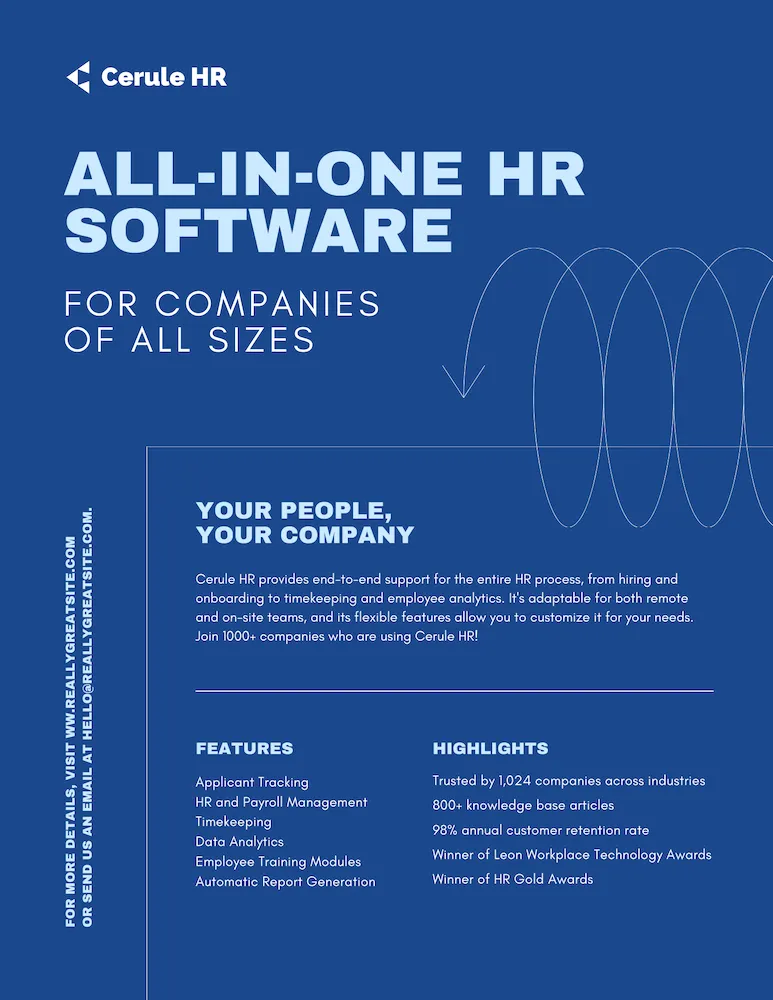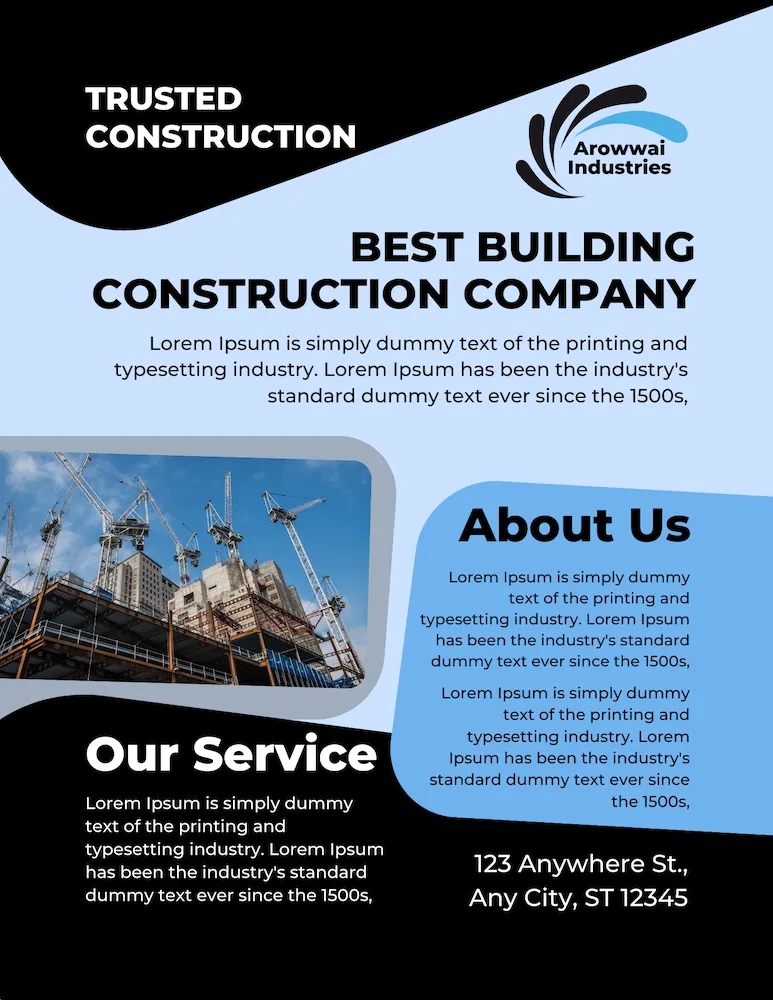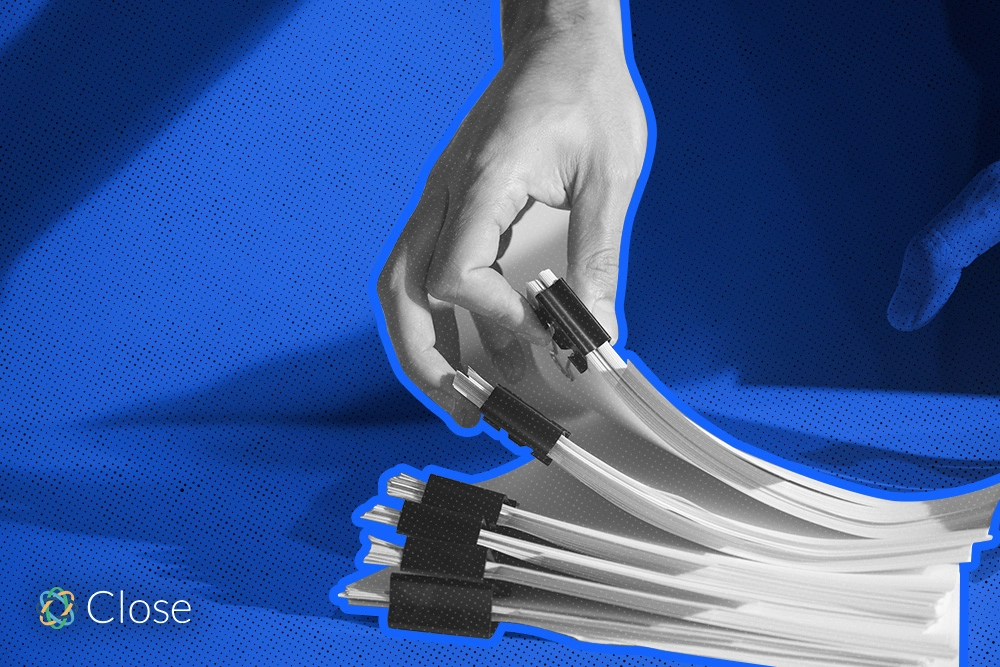
Trying to sell without a sell sheet is kinda like digging a ditch with a toothpick. You can do it, but it's going to take you a helluva long time. I don’t recommend it.
Today, I’m going to show you how to create an effective sell sheet for you and your sales team. This will help you get super clear on your sales pitch, supercharge your sales process, and help you and your team close deals faster. But first, let's talk about what the heck a sales sheet is. After all, not all sales reps use them.
What is a Sell Sheet?
Think of it as the printed, fancy version of your elevator pitch. You give your one-pager to your leads and let it educate them on your product’s top selling points in a compelling way that leads to sales.
How do you know if you need a sell sheet? Here are situations where you could use one:
- You’re doing in-person sales, going to people’s houses or businesses to speak with them directly, and leave them some information.
- You’re a local business sending direct mail campaigns to businesses or individuals in your area to attract new leads.
- You have a list of warm leads and their email addresses, and you want to send a well-designed sales email to them.
Here’s a quick sell sheet example I snagged from Canva so you can see what these look like:
 |
One of the best things about sell sheets is that anyone can use them. Maybe you’re an independent real estate agent. Maybe you’re a local business, like a dentist office or a lawn care pro. Maybe you sell for a new SaaS startup, an established retailer, or a Fortune 500 brand.
Doesn’t matter. A sell sheet can help you close deals faster no matter what you sell or who you sell to.
Product Sell Sheet vs. Company Sell Sheet: What’s The Difference?
Product sell sheets promote individual products, so these marketing materials hone in on product benefits and specifications. They mention the company that creates the product, of course, but the company isn’t the focus.
Company sell sheets, on the other hand, highlight a specific company’s mission, leadership team, and top products. It might mention stats and accolades when applicable, too.
Toward the end of this article, I’ll share company and product sell sheet templates you can use to create these for your sales team. Stay tuned.
What are the Benefits of Using a Sell Sheet?
Do you really need to make a sell sheet? No, you don’t need them. The local authorities won’t lock you up if you try to close a deal without one. But there are a lot of benefits. A great sales sheet will help you:
- Make a good first impression: You know the old saying, “You never get a second chance at a first impression.” It’s true. A sell sheet will help you present your business in a way that draws customers in, rather than pushes them away.
- Standardize sales information: If you’re a sales manager, you know standardization is important, so all of your reps promote your company’s products in a similar way. A sell sheet makes this easier to do. Reps just have to share the one-page document with prospective clients, or relay the information it contains.
- Streamline your sales pitch: Finally, your sell sheet will improve your sales pitch. How so? It will teach prospects about your product(s) and address specific problems they have before you speak to them, giving you a strong foundation to build on.
All of these things will help you connect with potential customers, build stronger relationships with them, and close more deals in less time. Win!
What Elements Should a Great Sell Sheet Include?
How do you actually create a top-level sales sheet for your team? Let’s discuss the elements that will help you connect with prospective customers, earn their trust, and elevate your sales process.
Your Brand Logo + Product Name
Make sure your one-page document features your brand logo and product name. This may seem like simple advice, but you'd be surprised how many people forget it.
Prospects should glance at your sell sheet and know exactly who your company is and the product you want to sell them. If they don’t, your one-pager doesn’t adequately display your brand identity and needs to be adjusted. Simple as that.
Now, don’t get too crazy here. You don’t have a ton of room. This is a one-page document, after all. Make sure your brand logo and product name are recognizable, but not overbearing.
Eye-Catching Visuals
Let’s talk graphics. To grab your target audience’s attention, use high-quality, full-color design elements that spark curiosity.
It doesn’t matter if you personally hand these marketing materials to prospective clients, or send them to their offices via a direct mail campaign. They need to make your recipients think, “What’s this? I should probably take a closer look and read every single word on the page!”
Your brand logo is a good start, but it’s not enough. Include pictures of your product—from multiple angles, if you can swing it. Graphs, symbols, and other infographic-type elements are great, too. As long as they match your brand identity and fit the space, add them in.
Why is this so important? Because the average person only reads 20 percent of the text put in front of them when there are more than 600 words. So don’t skimp on sell sheet design.
An Attention-Grabbing Headline
Next up, your headline.
Come up with a short, catchy tagline that grabs your target audience by the metaphorical lapels and forces them to pay attention to your product.
There’s no such thing as a perfect headline, but a good headline will resonate with your audience by mentioning their pain points or relating to a familiar situation. Use action words to showcase your value proposition, and motivate your audience.
Here are some examples of great headlines for your sales sheet:
- Moonlight Your Way to Financial Freedom
- Grow Your Personal Brand on LinkedIn in 90 Days
- Stop Stressing, Start Investing Right
- Join Thousands of Businesses Growing Their Revenue
Hook your audience with a headline that motivates them to take a closer look.
An Intro Paragraph With Compelling Copy
An introduction paragraph (or “About Us” section) should include a few sentences that reinforce your brand identity. Build trust with new leads by pointing to the specific problem your product solves for customers.
You know what else can help with this? Glowing testimonials. Feel free to add one to your intro that backs up the claims you make. This kind of social proof will go a long way toward turning strangers into paying customers, which is the whole point of this marketing tool.
Check out how revenue intelligence platform 6sense does this with their one-pager:
 |
With this sheet, they show exactly how different customers have benefited from their services, with real data.
Product Specs + Benefits
Your brand logo, visuals, headline, and intro paragraph help you grab your target audience’s attention and earn their trust. Now you need to sell them on your product, which you can do by listing product features, product benefits, and product specifications.
- Product features: What does your product do? Tell prospective customers about the functionality of your product so that they can decide if it’s something they need.
- Product benefits: Next, explain why those features matter. In other words, share product benefits, so readers think, “Yeah, I want that!”
- Product specifications: Lastly, include product specifications in your sell sheet. These might include size or weight for physical products, or usage limits and pricing tiers for SaaS products. While product benefits are the main selling points, product specs will help prospects iron out the minor details they need to make a purchase. This is especially true for new products that don’t have a ton of name recognition yet.
Data Visualization
The best sales sheets include data. Why? Because data helps prove the popularity, reliability, and effectiveness of your product in a very small amount of space.
For example, “92 percent of customers notice an immediate difference after using our product” is only 11 words, but it packs a serious punch.
To make sure your chosen data points really hit home, visualize them in an appealing way. You can do this with graphs and pie charts, which make data easier to read and understand.
If your data points don’t lend themselves to these things, though, try placing them next to eye-catching images, so they look like more than a pile of numbers. Here’s a quick example:
 |
Notice how this sell sheet uses graphs to help present data points in an attractive way. You can do something similar—and you don’t need to be a graphic design wiz to do it.
A Clear CTA
Last but not least, give your sales sheet a call-to-action (CTA).
What do you want your prospects to do after they view your one-pager? Maybe you want them to call or email you. Maybe you want them to download a document from your website. It doesn’t really matter—just make sure the next steps are clear to potential customers.
3 Sell Sheet Templates to Help You Close More Deals
Knowing which elements to add to your sales sheet and actually creating a one-pager that streamlines your company’s sales process are two different things. The three templates below will help you connect with decision-makers in more meaningful ways and make sales.
Note: Tools like Canva make it easy to create amazing sell sheets—even if you have no design experience and very little money. I encourage you to check both services out.
Product Sell Sheet Template
We’ll start with a product sell sheet template. Just remember, you can use this template for any product. You just need to adjust it to meet your needs. Take a look:
 |
What I like about this template:
- The product is prominently displayed in the center of the sell sheet
- There is room to explain product features and the benefits they help users achieve
- At the bottom, users can share information about their company, not just their products
Service Sell Sheet Template
What if you want to create a sale sheet for a service instead of a product? No problem. Simply modify this Canva template, which currently promotes dental services, to meet your needs:
 |
What I like about this template:
- The layout is visually pleasing, while maintaining a professional vibe
- There is room to add information about your team and services
- Contact information is super easy to find, which will increase your response rate
Company Sell Sheet Template
Want to create an effective sell sheet for your entire company? This template will fit the bill. As before, simply adjust the text, images, etc, to better fit your industry and specific business.
 |
What I like about this template:
- Let’s be honest, it looks snazzy
- It includes space for all necessary information
- It features space for a full-color, eye-catching image
Boost Sales With a Stellar Sales Sheet
A professional, well-designed sell sheet that includes all of the elements in this article will help you standardize information for your sales team, make a good first impression with potential customers, and streamline your reps’ sales pitches, leading to more close deals in less time.
You know what else will supercharge sales team productivity? The right CRM.
For growth-oriented small businesses, the “right” CRM is probably Close. That’s because our platform was built with you in mind and includes all of the features you need to succeed.
I’m talking about power and predictive dialers, a full sales outreach suite, intuitive contact management features, task automation capabilities, and in-depth sales reports.
Start your free 14-day trial of Close to see our platform in action and decide if it’s right for you.










